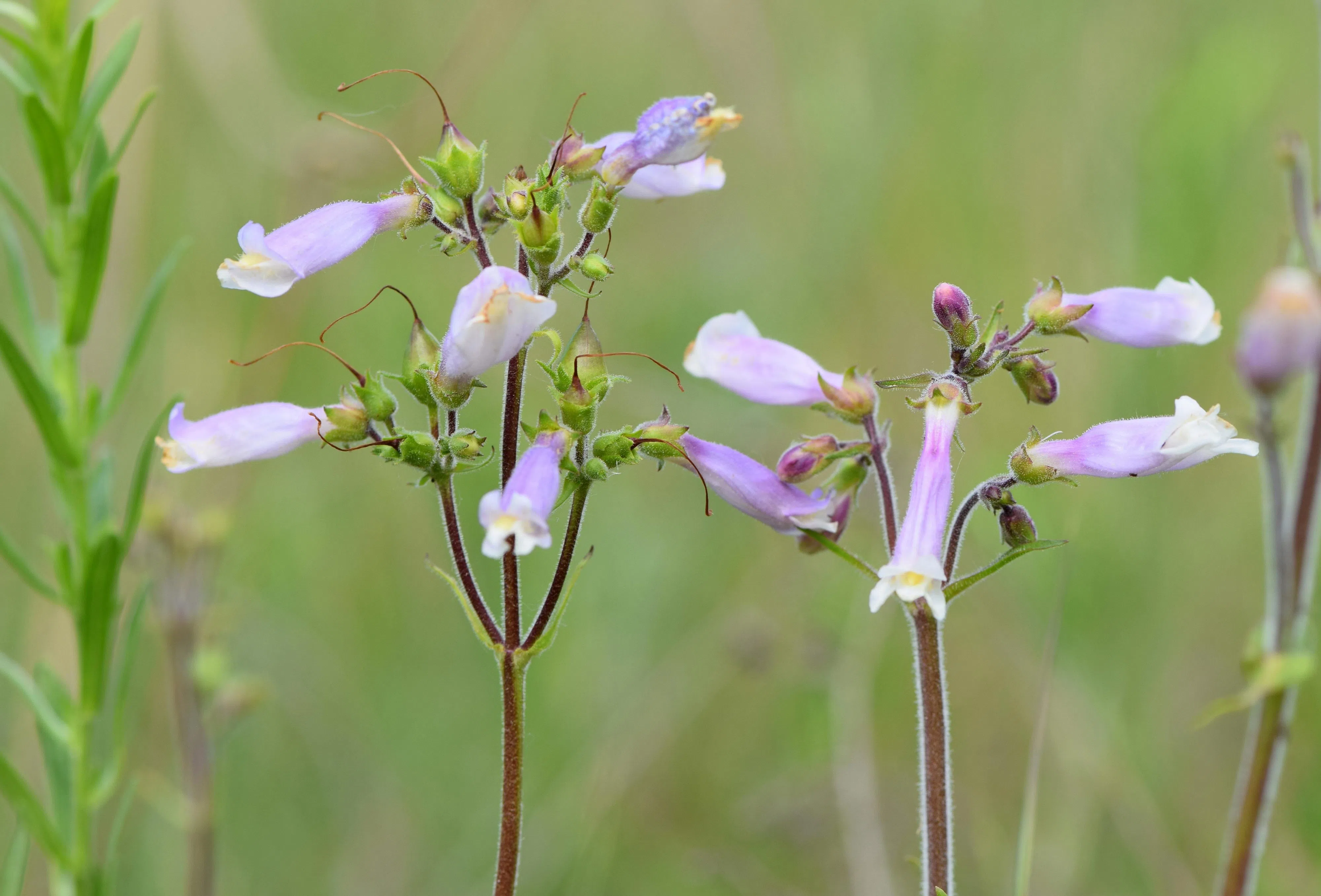
Hairy Beardtounge Photo by Gillian di Petta
The Alderville Black Oak Savanna lies on Alderville First Nation lands, and over the past 25 years it has become a flagship site in efforts to restore Ontario’s rare tallgrass prairie and black oak savanna landscapes.
What once were old agricultural fields have gradually been reworked by restoration biologists, Indigenous stewards, and community partners into thriving patches of native grasses, wildflowers, and remnant oak woodland.
The restoration journey owes much to the vision of Rick Beaver, a local biologist, Elder and artist, who first recognized the presence of rare grassland species in that region. Over time, with support from Alderville leadership and collaborators, that vision expanded.
In 2019, Alderville First Nation formally established the Mitigomin Native Plant Nursery (Mitigomin is an Anishinaabemowin word meaning “seed from an oak”) to anchor the restoration process through local seed collection, propagation, and ecological outreach.
Today, Gillian di Petta leads that nursery. She works behind the scenes – collecting, germinating, growing-on, and selecting seeds with local genetic provenance – and helps connect the science of restoration to public engagement.
On Prairie Day, scheduled for October 3, 2025, the site is opened to guided tours, birding walks, and talks – giving visitors a chance to walk through the living restoration, hear the stories of how this landscape is reknit, and meet stewards like di Petta.
Di Petta tells us more.
For Alderville, the work is about more than plants – it’s about seed sovereignty, ecological memory, youth education, and reconnecting Indigenous knowledge to the land.
According to di Petta, it’s a chance to showcase their efforts to restore this tallgrass ecosystem.
The nursery also grows traditional food and medicine species alongside ecological species, weaving in cultural priorities with ecological restoration.
While di Petta’s focus is largely on providing a local, reliable source of native plant stock for restoring critically endangered tallgrass, the site is also a destination for endangered wildlife.
Prairie Day offers visitors a bridge between the work being done and the public’s imagination – a chance to step into a rare ecosystem, learn how restoration happens over decades, and leave with a deeper sense of how people and nature can heal together.
(Written by: Joseph Goden)




